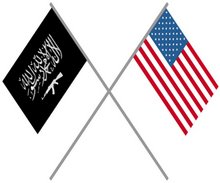According to Al Jazeera:
In a second battle in Helmand province, Afghan and international troops retook the Nad Ali district centre - which had been held by fighters - during a three-day fight, Ahmadi said.
That battle, which also involved airstrikes, ended on Saturday and resulted in the death of 40 Taliban fighters, officials said.
Afghan police and soldiers were now in control of the district centre.
Nato said its aircraft bombed fighters after they were seen gathering for a major attack, killing "multiple enemy forces".
"If the fighters planned a spectacular attack prior to the winter, this was a spectacular failure," Richard Blanchette, an Isaf spokesman, said.
Although I was somewhat disappointed to learn that there had been a district that I had not known was held by the Taliban, this is of course good news, as is the news, also reported in the article, that NATO had repulsed a major attack on Lashkar Gah. However, AJ did not mention this somewhat less cheerful development, which I found out about via Quqnoos:
Taliban claim to have forced NATO-led troops from a remote district
THE NATO-led International Security Assistance Force (ISAF) has withdrawn from a district in the north-eastern province of Nuristan, the international force said.
ISAF said it retreated from its forward operating base in the Kamdish district on Friday following advice from Afghanistan’s Defence Ministry.
But the Taliban claimed that it forced ISAF troops in the district to retreat after engaging them in fierce fighting in the district, one of the country’s most insecure.
The situation in Nuristan has been growing increasingly worrying. According to my current map prototype, the Taliban currently controls three of its eight districts, as well as the Dara-ye Pech District just across the border in Kunar Province, and a fourth district, Bargomatal, was attacked by Tehrik-i-Taliban-i-Pakistan back in July. I still have been unable to determine the outcome of that battle, but am inclined to think that, even if the TTP did manage to take it, which I don't think they did, their forces have since been withdrawn to fight the Pakistani security forces in Bajaur, which would leave the district only nominally in the Taliban's hands, just as so much of the rest of the province is only nominally in the hands of NATO and the central government. I have seen reports that some of the forces currently fighting in Bajaur had previously been fighting in Afghanistan, which lends some credence to this theory.
Nuristan, for those of you who are not familiar with it (i.e. pretty much all of you), is one of the most isolated inhabited regions on the face of the Earth. Its terrain is nearly impassable, and it is so out of the way that Islam didn't reach it until the end of the 19th century. Before then it was known as Kafiristan (land of the unbelievers) and its inhabitants as the Red Kafirs; their cousins, the Black Kafirs, or Kalasha, live on the Pakistani side of the Durand line and still practice their age-old pagan religion. The Nuristanis speak languages that are unusual even for Mianistan; while most languages in the region are either Iranian (e.g. Pashto, Wakhi, Yidgha) or Indo-Aryan (e.g. Khowar, Kalasha, Torwali) (although this "Dardic" sub-group of the Indo-Aryan branch is pretty weird), the Nuristani languages form a group all of their own.
There is, however, yet another major development regarding Afghanistan in the news today. Quqnoos reports:
US wants to reduce dependence on government by arming militias
THE UNITED States plans to arm tribal militias against the Taliban, US Defence Secretary Robert Gates said at a NATO summit in Hungary.
As part of a plan to create greater co-operation on both sides of the Afghan-Pakistani border, the US wants to train tribal militias in an attempt to reduce its dependence on the central government in Kabul.
Parliament members had already suggested arming the tribes, but the idea was not given any currency at the time.
This is a superb idea. Working with the tribes worked in Iraq, is working in Pakistan, and, unlike McCain's bizarre idea to "clear and hold" some of the most impassible terrain on Earth, it would also work in Afghanistan. In case you haven't noticed, I am strongly pro-tribe, not only because of my own tribal identity (Stewart of Bote FTW!), but also simply because it works. Indeed, in regions such as Mianistan I would venture to say that it is the only strategy that will work. My friend Woke at News Hounds has often said that it is impossible for a conventional army to defeat a popular insurgency. Although it is possible to do it if you brutally punish the civilian population, as Genghis Khan did, that's not really an option if you're the good guys, so it's true so far as we are concerned. This means that if you are faced with an insurgency, the only way that you can win is if it stops being popular. The psychopathic, woman-oppressing, elder-beheading Taliban are already helping us out on this one. However, their antisocial ways can be counteracted by the collateral damage we often inflict when we fight them directly. This means that there needs to be a popular insurgency against the unpopular one. We can then support the locals rather than killing them. And in the tribal reality of Mianistan, supporting the locals means supporting the tribes.

No comments:
Post a Comment